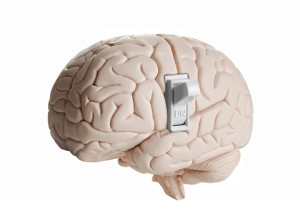Regulate Marijuana Like Alcohol?
Paul Gaita of The Fix reported that on February 20th, 2015 two bills were introduced in the House of Representatives that were aimed at legalizing marijuana for recreational purposes and taxing it like tobacco and alcohol. The Regulate Marijuana Like Alcohol Act was introduced by: Rep. Jared Polis of Colorado. The Marijuana Tax Revenue Act was introduced by: Rep.. Earl Blumenauer from Oregon. Polis and Blumenauer previously introduced similar bills in the past, but they failed to secure approval.
Polis was quoted as saying the legislation was important as the country moves toward a presidential election in 2016. “We don’t know if the next president will have the same hands-off approach that Barack Obama and Eric Holder eventually found their way towards.” Economist Jeff Miron, an advocate for legalization of marijuana, worried that a new president could order the new Attorney General to enforce federal prohibition, regardless of state law.
Tim Devaney, for The Hill, quoted Blumenauer as saying that: “A lot of people are recognizing that it’s insane to shuffle billions of dollars to Mexican drug cartels when we could just be taxing it.” His bill would initially tax recreational marijuana at 10%, gradually raising the rate to 25%. Medical marijuana would not be taxed at the federal level. Blumenauer estimated the federal government could make $10 billion dollars annually through marijuana taxes and the savings in not locking people up for possession of marijuana. “The federal prohibition of marijuana has been a failure, wasting tax dollars and ruining countless lives.”
Matt Ferner, for the Huffington Post, noted the bills would not force states to legalize marijuana. Rather, they would provide a regulatory framework for states that do decide to legalize it. Despite the four states and the District of Columbia who have made recreational marijuana use legal, “the sale, possession, production and distribution of marijuana all remain illegal under federal law.” Existing jurisprudence (Gonzales v. Raich 2005) holds that federal law trumps state law when it comes to marijuana. Only because of the current “hands off” guidance from the current administration has this legalization movement been able to move forward.
Congressman Blumenauer said, “It’s imperative the federal government become a full partner in building a workable and safe framework.” You can review a copy of the “Regulate Marijuana Like Alcohol Act” here. You can review a copy of the “Marijuana Tax Revenue Act” here. The summary of the “Regulate Marijuana Like Alcohol Act” made the following points.
- It directs the Attorney General to remove marijuana “in any form” from ALL schedules of controlled substances under the Controlled Substances Act.
- It will revise the definition of “felony drug offense” to exclude conduct relating to marijuana; and eliminate marijuana from “provisions setting forth penalties applicable to prohibited conduct” under the Act.
- It prohibits the shipment of marijuana from outside the United States into any jurisdiction in the U.S. where its possession, use or sale is prohibited.
- It will grant the FDA the same authorities with respect to marijuana as it currently has for alcohol. Functions currently under the Drug Enforcement Administration would be transferred to the Bureau of Alcohol, Tobacco, Firearms and Explosives, which will be renamed as: the Bureau of Alcohol, Tobacco, Marijuana, Firearms and Explosives. The Alcohol and Tobacco Tax and Trade Bureau will be renamed as Alcohol, Tobacco and Marijuana Tax and Trade Bureau.
There are several points to raise about the above proposed legislation and statements made by Polis and Blumenauer in support of them. First is Blumenauer’s assertion of a $10 billion dollar annual income for the federal government. If the states are to be allowed to decide to legalize recreational marijuana, how can an annual federal income even be estimated with any accuracy? Federal savings on incarcerations for marijuana possession would only be in federal facilities. Were the savings projections based on ONLY individuals incarcerated in federal prisons for marijuana possession?
Colorado does have a promising new tax income base with marijuana. The state reported that in January of 2015, its total income from all marijuana taxes, licenses and fees for fiscal year 2014-2015 to date was $61,372,000. Would the proposed federal increase in marijuana tax at 10% to 25% be added to the existing tax of states like Colorado? Colorado currently has 2.9% retail and medical marijuana sales tax, 10% retail marijuana special sales tax, 15% marijuana excise tax, and retail/medical marijuana application and license fees. Additional taxes would drive up the price and promote even greater price inequities between legal and black market marijuana, which is already a problem in both Colorado and Washington.
This doesn’t seem to be a way to simply divert income from the Mexican drug cartels into the state and federal treasuries. A future post, “The Economics of Heroin,” will indicate that instead of planting marijuana, the cartels are simply having their drug farmers plant opium poppies. And if cartel marijuana is cheaper than the state approved kind, it will still have a market.
Marijuana is currently a Schedule I Controlled Substance, according to the DEA. That means it is considered to have no currently accepted medical use and a high potential for abuse. While its harm potential is lower than many other drugs, including alcohol, completely removing it from classification in the Controlled Substance Act is an unrealistic expectation. Reclassifying it into a lower Schedule would increase its availability for research—and legitimize its medical use.
The potential harm and benefit of marijuana could be looked at in future research. With what we already know about the harmful effects of alcohol on the human body, would we want to remove all restraint on marijuana at the federal level before we know more about it? Isn’t it likely that similar to tobacco, we could see an increasing consensus of the public health problems with widespread marijuana use and then look to institute a similar public health program to address them? How many countless lives would be ruined if marijuana was regulated as alcohol is currently?
There also seems to be a hidden trap in making the proposed changes on the federal level by the “Regulate Marijuana Like Marijuana Act.” While the legislation may not force states to legalize marijuana, if existing jurisprudence, such as Gonzales v. Raich 2005, has been used to hold that federal law trumps state law when it comes to marijuana, could the “Regulate Marijuana Like Alcohol Act” be used to undermine and challenge any existing state laws with more restrictive laws on marijuana than the federal government? No, I don’t think we should regulate marijuana like we do alcohol.



